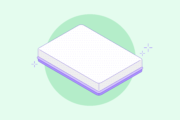
How to Choose Mattress Thickness

- Optimal mattress thickness is recommended to be between 10 to 14 inches for a comfortable and supportive sleep. This range ensures a proper balance between the comfort layer, transition layer, and base layer, catering to various sleep preferences and body types.
- Tailoring mattress thickness based on sleep position is crucial. For instance, side sleepers benefit from thicker mattresses (12 to 14 inches) with extra-plush comfort layers for pressure point relief, while back sleepers find comfort in firmer, 10 to 12-inch mattresses for proper spine alignment.
- The base layer, constituting at least 50 percent of mattress thickness, plays a pivotal role in durability. Thicker base layers (6 to 8 inches) contribute to a longer mattress lifespan and prevent premature sagging, especially crucial for plus-size sleepers.
Part of choosing the perfect mattress is considering how thick should a mattress be. The mattress thickness contributes to your comfort level at bedtime. Purchasing a thin mattress may cause premature sagging and contribute to poor sleep. It is recommended sleepers choose a bed at least 10 to 14 inches thick. However, there are many factors like body type and sleep position that may require an even thicker mattress.
In this article, we’ll discuss what you should consider when looking for a thick mattress. Also, we’ll break down what affects the thickness of your mattress.
What Affects Mattress Thickness?
Before you choose your new bed, you’ll need to know what contributes to the depth of your mattress. Most mattresses have two or more layers inside of them, specifically designed to provide support for sleepers. Let’s look at the two basic layers found in all mattresses: the comfort layer and the base layer.
Comfort Layer
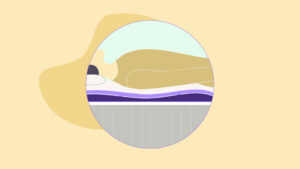 The comfort layers are the soft top layer of your mattress. These layers are the closest to your body when you’re asleep and relieve pressure, which is why they feel so plush. Comfort layers are made with cotton, wool or poly-foam, to contour to the curves of your body. They also are effective in isolating motion transfer, which can be especially good for couples.
The comfort layers are the soft top layer of your mattress. These layers are the closest to your body when you’re asleep and relieve pressure, which is why they feel so plush. Comfort layers are made with cotton, wool or poly-foam, to contour to the curves of your body. They also are effective in isolating motion transfer, which can be especially good for couples.
Some luxury beds may have more than one comfort layer to provide sleepers with cooling technologies or targeted back support. These additional layers may contribute to the overall depth of your mattress. They may even be 3 to 4 inches thick. However, the majority of comfort layers have a mattress thickness of 2 to 3 inches thick.
Underneath the comfort layer of your mattress lies the transition layers. The transition layer acts as an insulator by providing a buffer between the soft top layers and firm core layers. Most beds have insulator/transition layers made of high-density poly-foam, latex, or wool.
Depending on how the mattress is constructed, this layer is zoned to offer more comfort to sensitive regions of your body, such as the head, shoulders, back, hips, and feet.
Base Layer
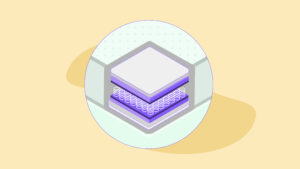 The base layer or support layer is the foundation of your mattress and is usually made from poly-foam, latex, or pocketed springs. This layer should make up at least 50 percent of your mattress thickness.
The base layer or support layer is the foundation of your mattress and is usually made from poly-foam, latex, or pocketed springs. This layer should make up at least 50 percent of your mattress thickness.
Typically, mattresses with a thick base layer tend to be more durable, while thinner ones may be prone to sagging. So if your bed has a depth of 14 inches, you should make sure the base layer is 6 to 7 inches thick.
Mattress Thickness Guide
Ideally, a durable and comfy mattress thickness should be at least 8 to 14 inches thick. You’ll also want to meet the minimum requirement of a 2 to 3-inch thick comfort layer and 5 to 6-inch base layer. However, there are other factors to consider before you choose your new bed.
Sleeping Position
Your sleeping position affects how comfortable you will feel on a mattress. Certain sleeping positions, like side sleep, require extra cushioning for individuals to stay comfy.
On the other hand, you may need support for sensitive regions of the body, like your back and hips. Choosing a comfortable mattress with a specific thickness can help cater to your sleep needs.
- Side Sleepers: Mattresses for side sleepers should be 12 to 14 inches thick. They also require soft cushioning to reduce the pressure on the shoulders and hips. Thick beds with extra-plush comfort layers provide pressure point relief and prevent muscle aches and pains during sleep.
- Back Sleepers: Beds for back sleepers are typically firm 10 to 12-inch. If you are a back sleeper, you’ll require support for your shoulders and buttocks. A firm mattress can keep your spine properly aligned.
- Stomach Sleepers: The best mattresses for stomach sleepers are 10-inch thick to reduce the chances of spinal misalignment. We do not recommend stomach sleeping, but thinner comfort layers will provide a firmer surface to support your abdomen and ease the strain on your back.
- Combination Sleepers: Combination sleepers switch between 2 to 3 positions throughout the night and need a medium-feel mattress to accommodate all positions. Mattresses for combination sleepers should be at least 12 inches thick with a medium feel to provide the sleeper with the perfect balance of firmness and softness.
Body Type
Adding too much pressure to your mattress can cause permanent damage to your bed and can negatively affect your sleep. To avoid having to replace your mattress earlier than you planned, you need to determine how your mattress responds to your body weight.
- Lightweight Sleepers (weighing less than 130 pounds): Mattresses for petite sleepers should be soft and at least 12 inches or thicker. These beds have ultra-thick comfort layers to relieve pressure points and conform to their bodies, reducing joint pain.
- Average Weight Sleepers (weighing between 130 to 230 pounds): Average sleepers usually sleep best on medium-firm mattresses with a depth of 10 to 12 inches. However, this all depends on your preferred sleeping position. Side-sleepers may require a softer sleeping surface. It’s best to check the material used in the comfort layers so you can understand how they will affect the feel of the bed.
- Plus-Size Sleepers (weighing above 230 pounds): Beds for plus-size sleepers should choose a bed 12 to 14 inches thick. Try to pick mattresses with comfort layers that are at least 6 inches as well. You’ll also want a base layer at least 7 to 8 inches thick. Sometimes thicker layers provide extra cushioning for sleepers and prevent premature sagging.
Are You Sharing a Bed?
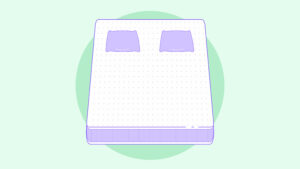 Sharing a new bed with a partner will add more pressure onto your mattress than if you were sleeping alone. Putting extra pressure on a thin mattress will cause it to sag and may impact your sleep. So, if you’re sharing your bed, it should be at least 10-12 inches thick.
Sharing a new bed with a partner will add more pressure onto your mattress than if you were sleeping alone. Putting extra pressure on a thin mattress will cause it to sag and may impact your sleep. So, if you’re sharing your bed, it should be at least 10-12 inches thick.
Height of Your Foundation
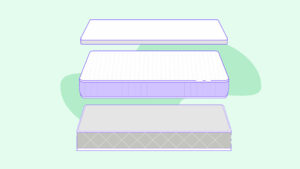 You’ll want to combine the mattress thickness and a deep or extra tall mattress foundation to ensure your bed will still be accessible. When your bed is too high, it’s harder to climb in and out of bed each night.
You’ll want to combine the mattress thickness and a deep or extra tall mattress foundation to ensure your bed will still be accessible. When your bed is too high, it’s harder to climb in and out of bed each night.
We suggest keeping your mattress at least 25 inches from the ground. This will allow you to access your bed easily throughout the night. Keeping your thick mattress elevated also minimizes its exposure to dust and other allergens, though you may still want to look into a mattress protector if you want to avoid triggering allergy symptoms.
There’s also toppers to consider, as a mattress topper will raise the height of your bed by 2 to 4 inches, usually. Many sleepers won’t bother pairing a mattress topper with a new mattress, as ideally the surface shouldn’t need any extra help to feel comfortable.
However, if you plan on pairing something like a cooling mattress topper with your new mattress, you will also need to account for the topper’s thickness when it comes to your bed’s total height.
SEE ALSO: Best Hypoallergenic Mattresses for Allergies
Mobility Issues
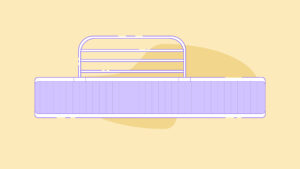 If you are experiencing difficulty getting into bed, search for a mattress thickness under 14 inches. Going beyond a 14-inch mattress is not recommended for individuals with mobility issues since struggling to get in bed could worsen medical conditions. The ideal bed height makes it easier to move in and out of bed, minimizing the risk of falls.
If you are experiencing difficulty getting into bed, search for a mattress thickness under 14 inches. Going beyond a 14-inch mattress is not recommended for individuals with mobility issues since struggling to get in bed could worsen medical conditions. The ideal bed height makes it easier to move in and out of bed, minimizing the risk of falls.
Sleepers with arthritis, shoulder pain, or hip pain should use mattresses 12 to 14 inches thick. These thick mattresses tend to be softer and contain enhanced cushioning to relieve pressure.
Advantages and Disadvantages of a Thick Mattresses
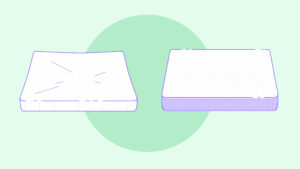 Investing in a thicker mattress provides sleepers with more cushioning and offers an ultra-plush sleeping surface. Thin mattresses are not the best choice for couples since they can’t withstand the weight of two adults. This can make bedtime extremely uncomfortable and may cause permanent damage to your mattress due to sagging.
Investing in a thicker mattress provides sleepers with more cushioning and offers an ultra-plush sleeping surface. Thin mattresses are not the best choice for couples since they can’t withstand the weight of two adults. This can make bedtime extremely uncomfortable and may cause permanent damage to your mattress due to sagging.
Though a thick 14 inch mattress or even thicker may be the best option for some, there are a few drawbacks. Extra thick mattresses include more layers, so they can be extremely pricey, with some high-quality thick beds costing more than $1500.
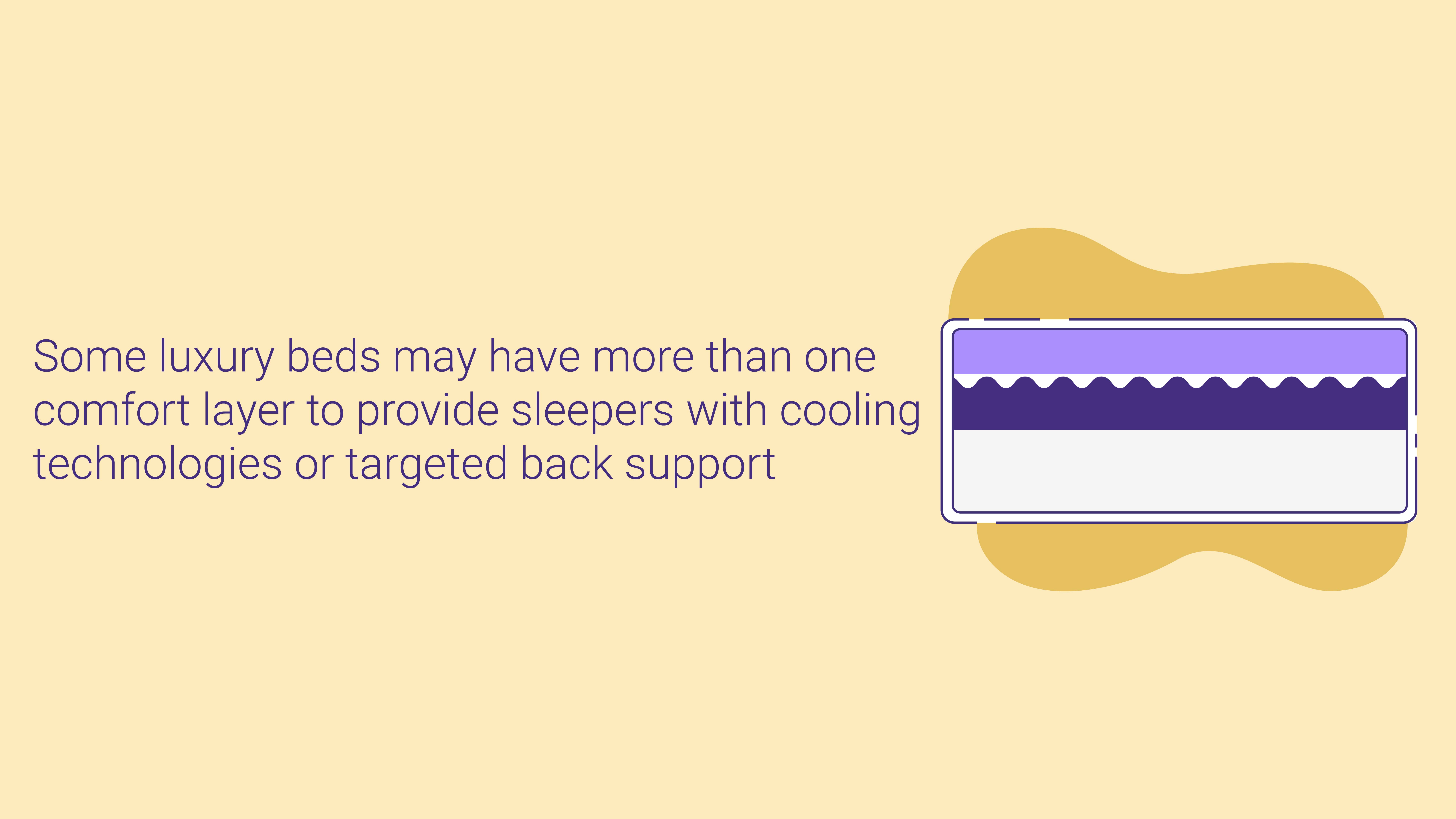
FAQS
Should I use a mattress topper to add thickness to my bed?
It’s not uncommon for sleepers to purchase a topper to modify their mattress comfort. A good mattress topper can add to the overall softness, luxuriousness, and support of your mattress. It can also increase the thickness of your mattress and even and prolong its lifespan. Not to mention, toppers are an affordable way to add thickness to your bed without purchasing a new mattress.
How thick is the average mattress?
The average thickness of mattresses ranges between 8 to 14 inches. Typically, the best mattresses have a comfort layer at least 2-3 inches thick with a base layer 6-8 inches thick. Also, they contain a 1-2 inch thick transition layer. It’s best to choose mattresses within this range to maintain good quality sleep.
How thick should a memory foam mattress be?
If you are purchasing a memory foam mattress, you should consider beds 10 to 14 inches thick. Mattresses in this range are durable and will provide sleepers with the proper support while asleep. Choosing a mattress thinner than recommended may take away from the natural comfort of a memory foam mattress. Thinner memory foam mattresses are also likely to sag and might become damaged.
Do I need bigger sheets for thicker mattresses?
Mattresses thicker than 14 inches may need a larger size sheet to fit properly. Furthermore, for beds with additional items like mattress toppers or pads, you may need a bigger size as well. If your sheets are constantly popping off your bed, we recommend purchasing tight-fitted sheets with deep pockets to keep them on.
See Also: 10 Inch vs. 12 Inch Mattress
How high should my bed be?
We recommend keeping your bed at least 25 inches from the ground. A mattress can be 12 inches or more, so most people consider purchasing foundations around 8.5 inches to achieve the suggested height. Remember, sheets, mattress toppers, or pads all contribute to the overall height of your bed.
Conclusion
Buying a thin mattress can contribute to poor sleep, but a thicker mattress may be uncomfortable for some. Sometimes, when mattresses are too thick, it’s harder for sleepers to climb in and out of bed. Typically, the best mattress for you will depend on your sleeping position and body type.
A good rule of thumb is to choose a mattress within the 10 to 14-inch range since they are known to provide individuals with a good night’s sleep.

